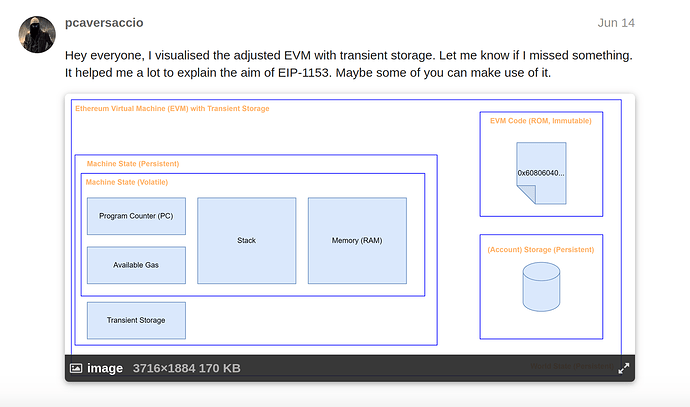These two posts basically sum up my feelings on the issue. The goal here is to provide a fundamentally different memory region, with different scoping, longevity, and pricing than any existing memory region? Then it should be a separate memory region, rather than leaving it up to the clients to cache smarter.
I am fairly confident this will not be hard to implement in KEVM (client that RV maintains), and I don’t think it will increase the complexity of verification using KEVM significantly. I can’t speak for other tools. I think with good usage of this feature, it may even reduce the complexity of some verification efforts (many variables you’ll be able to tell immediately that they cannot alias, for example, or if an entire modifier only uses transient variables, maybe we can have modular verification of the modifier more easily?).
It seems to me as well that it is not too much complexity for clients, because several clients have been modified to handle this new opcode, and tests have been provided (though maybe this could have been done earlier in the discussion, I know that having tests increases my confidence quite a bit: EIP-1153: Transient Storage tests by moodysalem · Pull Request #1091 · ethereum/tests · GitHub).
That being said, I cannot speak for other tools. Our semantics and verification is based on symbolic execution, which is different than other tools. I also can’t speak for the Solidity compiler, but does the Solidity compiler need to support the feature immediately? Can we let devs use inline assembly, let a few examples of how it’s being used trickle in, then give people the version of the feature that has compiler-guaranteed guardrails in place?
The first users of the feature, whether via the Solidity compiler or not, are going to be taking the brunt of risk here (risk of not understanding the new feature correctly, or risk of Solidity compiler behaving unexpectedly on the new feature). I am usually a fan of the “give the devs tools, and let them figure out how to not shoot themselves in the foot” approach. I do think that the devs opinions here are more valuable than my own opinion, they are the ones trying to innovate here.
Also shoutout to @pcaversaccio for the diagram, I find these types of visualizations very helpful.
